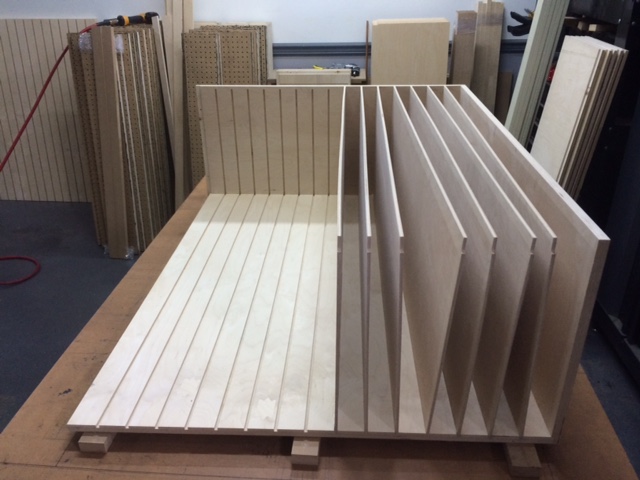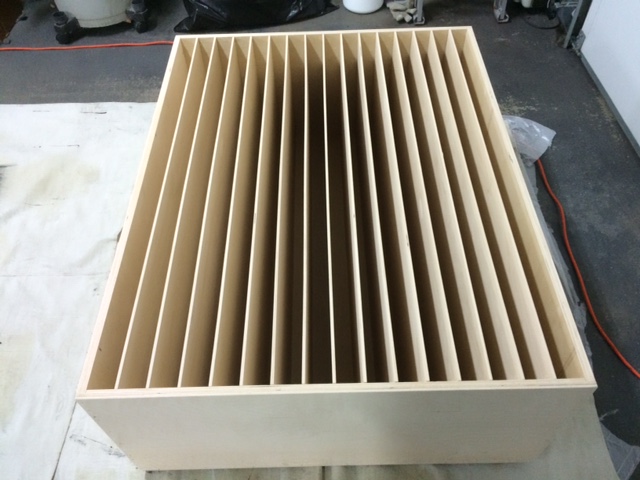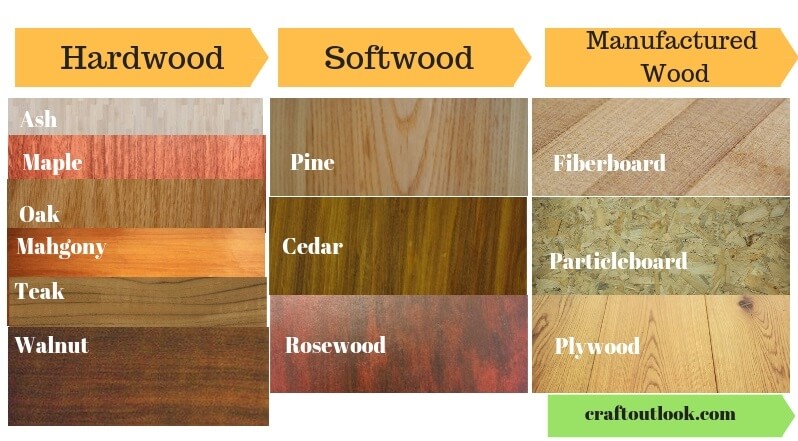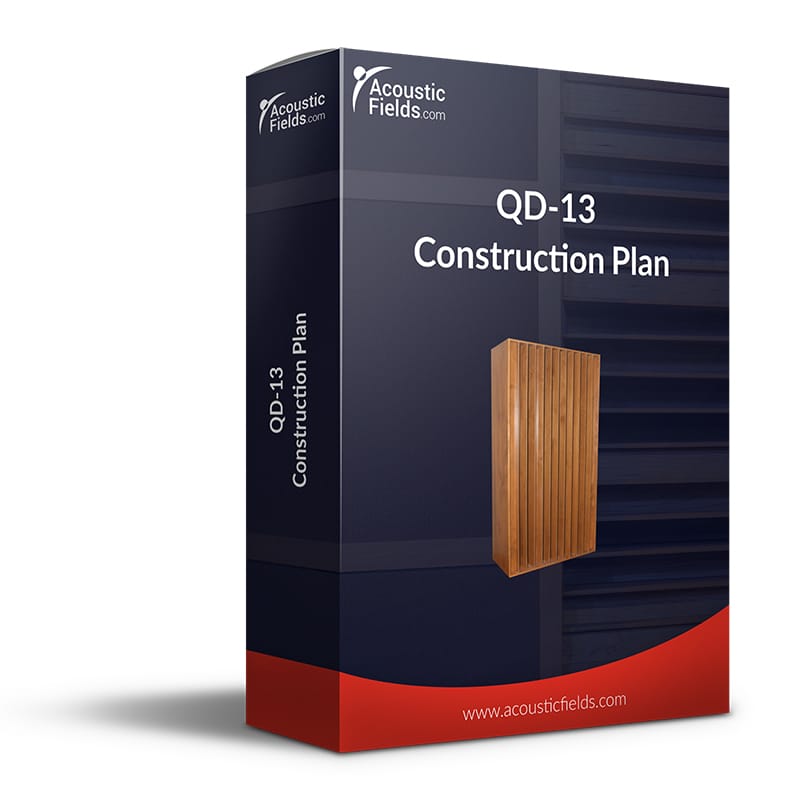Woods
There are two main types of wood that we can use when we are looking at the best wood for sound diffusers. We have hardwoods and softwoods. Hardwoods are darker in color, heavier, more expensive, last for several decades, and are naturally weather resistant. Softwoods are lighter in color, lighter in weight, less expensive, last for over a decade, and are weather-resistant when treated.
Hardwoods include ash, maple, oak, mahogany, teak, and walnut. Softwoods include pine, cedar, rosewood, and basswood. When we are building a sound diffuser we must use softwood as the best wood for sound diffusers. Softwoods have better tonal quality for middle-range frequencies. Since diffusers work with middle-range frequencies, we want a wood type that produces the warm tones for our music and voice frequencies. Let’s take a look at how diffusers are built.
Quadratic Diffusers
Quadratic diffusers are the only true diffusion type to use in a music or vocal room. They are the only true diffuser because of their ability to satisfy the five rigid criteria needed in our critical listening environments. The first criterion that must be met is that there can be no frequency irregularities in the room frequency response. Secondly,
there can be no beats in the decay characteristics of the room. Thirdly, the decay rate must be exponentially smooth throughout the room. Fourth, we must the same decay rate throughout the room and finally, the reverberation times in the room must be the same throughout the room. Only quadratic diffusion can accomplish these 5 rigid criteria.
Series Of Troughs
A quadratic diffuser is a series of wells or troughs with different depths. The wells or troughs send back into the room the energy that the speakers place into them. Each quadratic diffuser is based upon a prime number that determines the diffuser’s frequency response. The well or trough depth is based upon quarter wavelength rules and the well widths are based upon half-wavelength rules. Quadratic diffusers have a frequency response with a low and high range. Most quadratic diffusers diffuse energy from 200 – 300 Hz up through 8,000 Hz. You can design the frequency response of the diffuser to match your room usage. All quadratic diffusers are based upon prime numbers such as 7,11, 13, 17, 19, and 23.
DIY Build Plans: https://www.acousticfields.com/product-category/d-i-y-acoustic-treatment/
DIY Diffusers
When building your own quadratic diffusers, you must first choose the correct prime number for your diffuser build. That prime number and frequency response are distance-based meaning that the prime number you use to choose your diffuser sequence must be chosen based upon the distance from the wall surface the diffuser is to be installed upon and the receiver or listening position. We must have enough distance for the lowest frequency in the quadratic diffuser to have enough distance for the waveform to fully form. Each prime number has a different lower frequency octave that must have enough room to live and die on its own volition. Care must be taken in calculating that distance in relation to the receiver’s ears.

Quadratic Diffuser Interior Vertical Wells
Build Process
A DIY diffuser has many pieces. It has a wood-framed box that houses the vertical and horizontal wells. The vertical well dividers are inserted into dados in the back, top, and bottom pieces of the cabinet. Dados are required since you are using a small wood for the vertical dividers. The small wood vertical slats must have dados to secure them from warping over time due to humidity changes and moisture loss. The horizontal well dividers are a thicker wood for greater support in the vertical and horizontal domains. Let’s look at the well depths of a prime number 13. We have 12 wells with different depths. The well depths are 1″, 4″, 9″, 3″, 12″, 10″, 10″, 12″, 3″, 9″, 4″, 1″. The total depth of the prime 13 or QD-13 is 12 1/2″. The total width is 27″ and standard heights are 48″.

Quadratic Diffuser
After your diffuser is built, you must decide how to finish it. Since you are using real wood, lets never use paint. Paint is a sin to put on wood. It is also bad for sound quality. Remember this is a middle-range acoustic diffusion tools that is very sensitive to materials used and the finish material used upon them. Prime number 13 diffuser operates in a frequency band of 280 Hz. – 3,450.00. With natural wood, we already have the best material for mid-range tonal quality especially since we have used a softwood choice which is the best wood for sound diffusers. We can stain it or we can just seal it with a clear coat to protect against moisture and dirt.
Positioning
Quadratic diffusers can be positioned both vertically and horizontally. They are each a one-dimensional diffuser on their own. The positioning depends on many variables such as room usage and distances between the room walls and the listening position. Whether we use one-dimensional diffusion or two dimensional depends on the room usage and the distances involved within your room. At this stage, it is best to have us help you with the prime number to build and then positioning of either one dimension or two dimensions.
About Us At Acoustic Fields: https://www.acousticfields.com/about/











Both softwoods and hardwoods can last for centuries. Cedar and huon pine for example is better weathering than most hardwoods. What gibberish.
How many diffusers have you built and tested? What wood types did you use? What were the middle range tonal changes you noted between the woods? I would like to compare our data with yours.